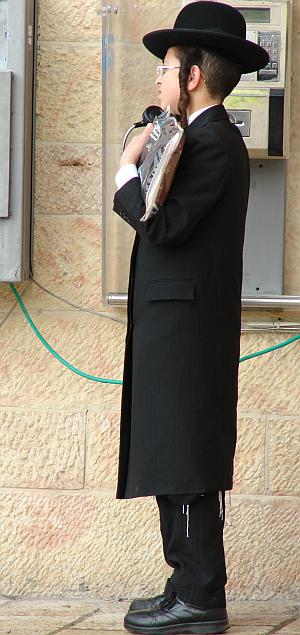 Day 8
Day 8
The Western Wall is the western side of the foundation for the Temple Mount in Jerusalem, built by Herod the Great. The Rabbinical Tunnels are a series of tunnels that make their way through the ancient debris on the west side of the Temple Mount.
The temple has an interesting history.
1 Kings 5-9 tells us how Solomon built the temple in 966BC. It was destroyed by the Babylonians and rebuilt 70 years later under the direction of Zerubbabel in 516BC. Shortly before the birth of Christ, Herod the Great began extensive modifications on the mountaintop (leveled off the top to a 1,500 x 1,000 foot rectangle) and rebuilt the temple. The massive temple complex project lasted well beyond Herod’s death (~4BC) and was completed in 60AD – 10 years before its destruction by the Romans in 70AD. (If you ever watch the movie “The Nativity Story“, be sure to catch the opening scene where Herod the Great is talking with his son. In the background, you can see the Temple under construction. Due to realistic computer animation, this movie does the best job to date in depicting the temple as it was in the 1st Century.)
The part of the foundation wall that is exposed to the public is often referred to as the Wailing Wall. It is one of the holiest sites in Judiasm. Archaeological digs have uncovered the rest of the 1,500ft Western Wall. Because modern buildings currently sit on that spot, the digs are a set of tunnels that run the length of the Temple Mount. These tunnels are called the Rabbinical Tunnels.
By the way… the heaviest object ever lifted by man without powered machines can be found here. It is a piece of the Temple Mount – a stone 44.5 feet long, approximately 12 feet wide and weighs an estimated 570 tons. I’m glad I didn’t have to lift it.
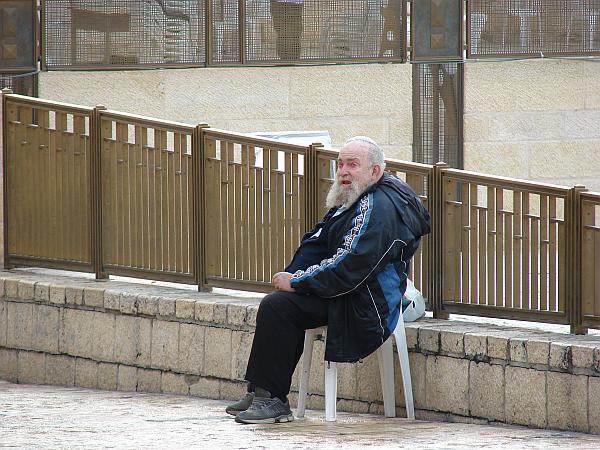 |
To get to the tunnel, you start at the Wailing Wall. Here’s some guy sitting there. I think he was blind. He seemed to be yelling at people that walked by. Not sure why. |
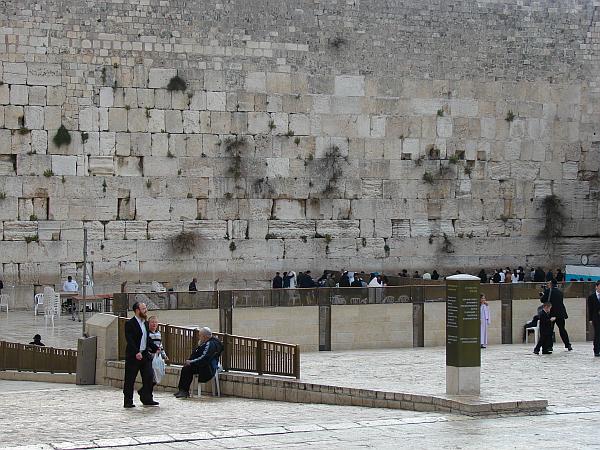 |
|
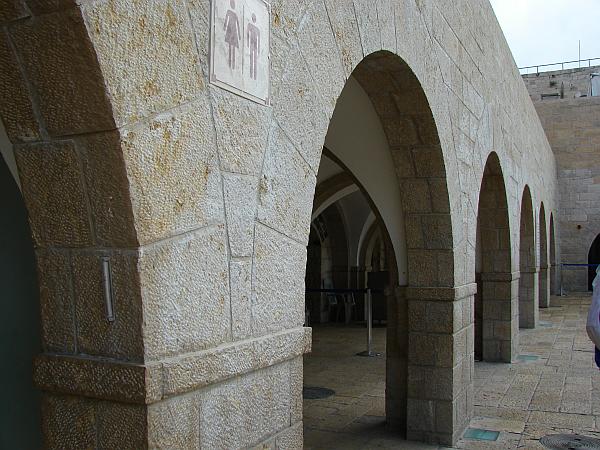 |
Thankfully the entrance to the tunnels has a bathroom available. |
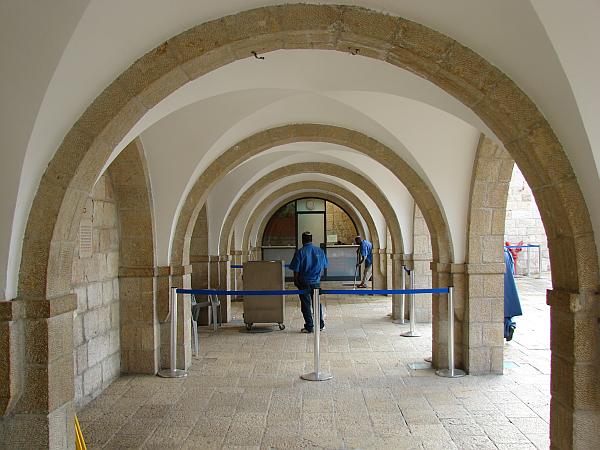 |
|
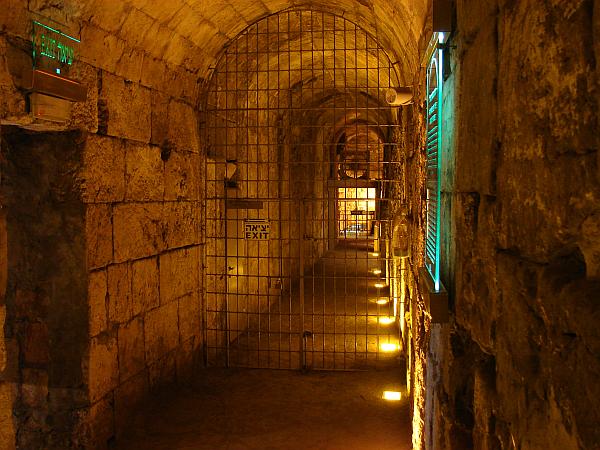 |
Some parts of the rabbinical tunnel were off limits. |
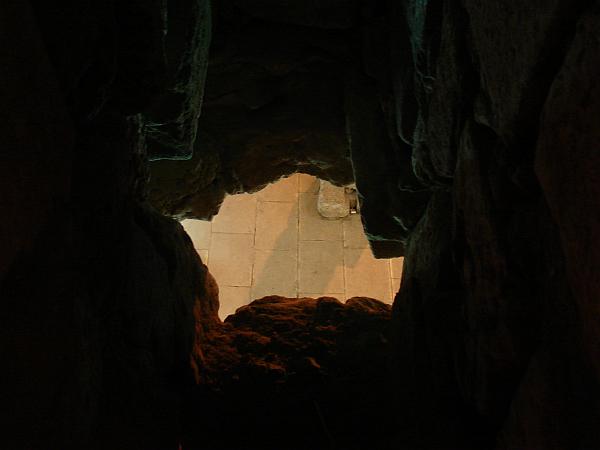 |
Because Jerusalem was conquered several times (Romans, Muslims, Crusaders, etc), there are several layers of ruins. In some sections, we were walking on Crusader-era ruins and a hole was available where you could see down below to the Roman-era ruins. |
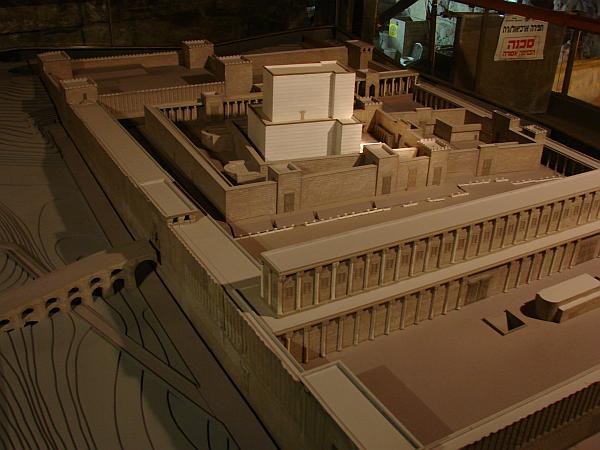 |
Here’s a model of the temple as it existed in Herod’s day. The Holy of Holies was in the white building. I believe it was ten stories tall. The western wall is on the left side of the photo.(For more on this, be sure to see the movie clip section) |
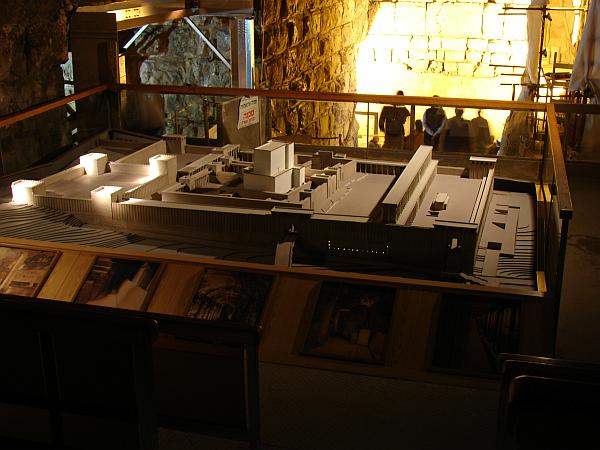 |
From this camera angle, you have a good view of the western wall of the temple mount. It’s around 1500 feet and runs from left to right in this photo. Today, most of it is covered. The part that is exposed starts with the bridge (in the very center of this photo), and extends to the right (south). The rectangle lights (looking somewhat like Christmas lights) is what we call the Wailing Wall. (In the above photo, the Wailing Wall section is slightly lighter brown than the rest of the wall).The lighted area at the top of the photograph and the scaffolding on the right is due to continual excavations. When we were there, someone was using a jackhammer. |
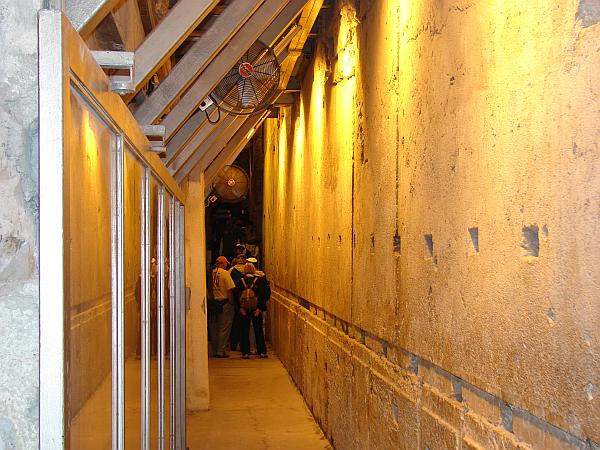 |
Here’s that huge stone. |
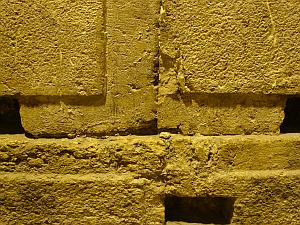 |
Their seams weren’t as razor-thin as the Egyptians, but then, the Egyptians didn’t have to move any 570-ton stones – that we know of. |
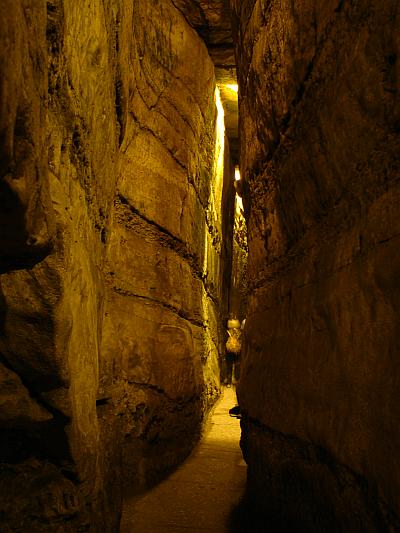 |
|
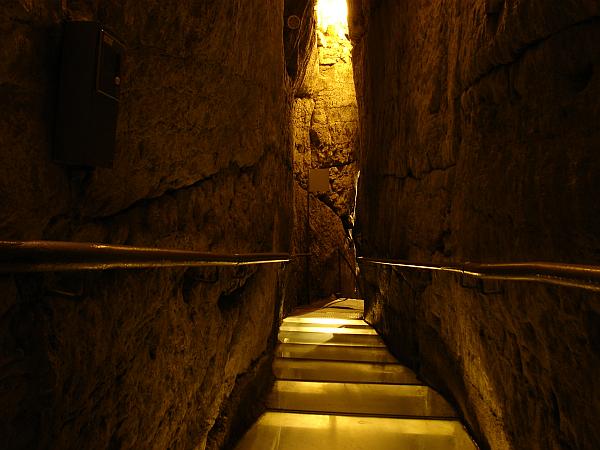 |
Here’s another section of glass floors that allowed us to see down to the Roman-era streets below. |
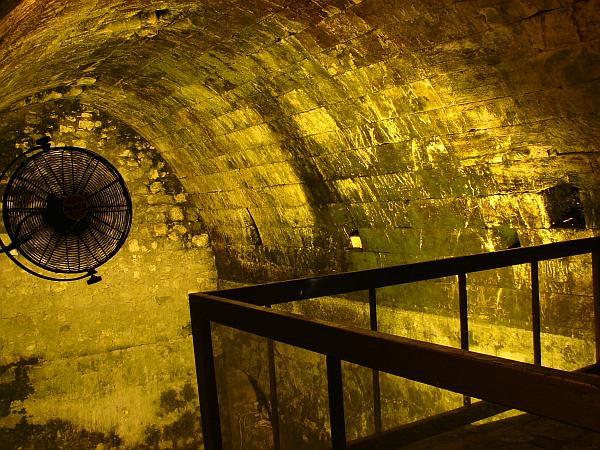 |
A large Crusader-era cistern. It was probably 40 feet high. |
<
